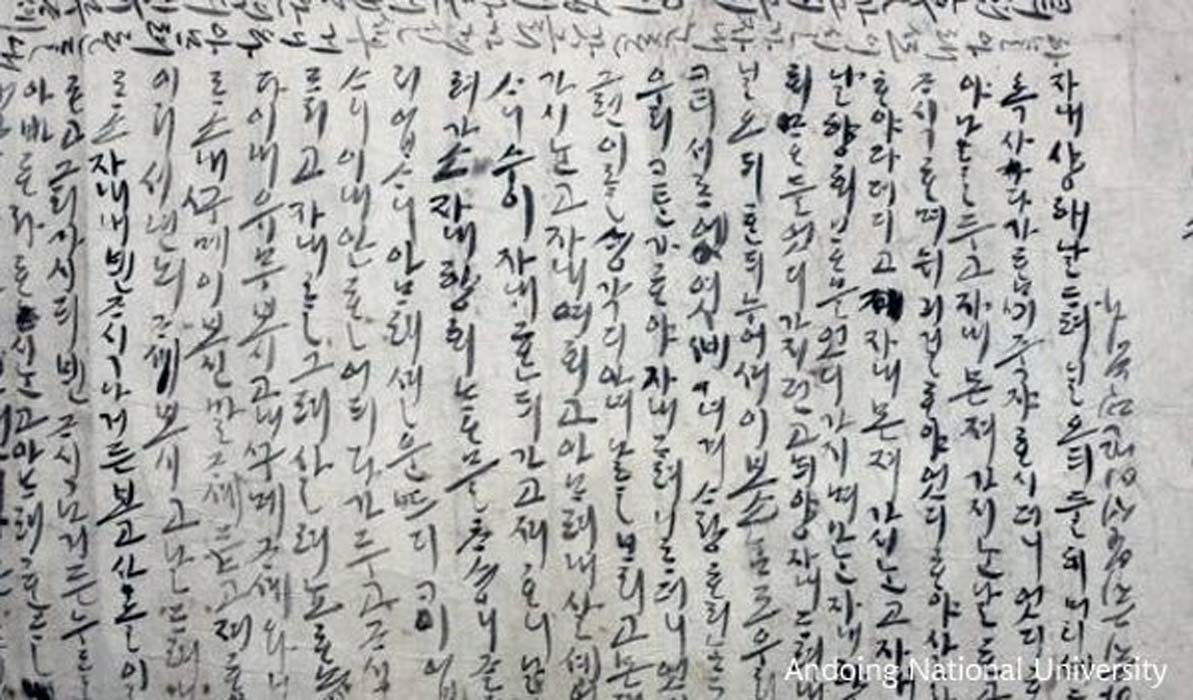Last Words of Love Were Sealed for 500 Years in a Korean Tomb
I just want to go to you. Please take me to where you are. My feelings towards you I cannot forget in this world and my sorrow knows no limit. Where would I put my heart now and how can I live with the child missing you… When I give birth to the child in me, who should it call father?
These are some of the touching words of a pregnant woman, that lay on the chest of her deceased husband for almost half a millennium. The poetic and intensely emotional letter was found on the mummified body of Eung-tae, a member of Korea’s ancient Goseong Yi clan, until it was unearthed in Andong City, South Korea in 1998.
The note was addressed to “Won’s Father”, and was translated into English soon after its discovery. The romantic piece quickly made the headlines and the heart-breaking story has since inspired an opera, a film, and numerous novels.
- The Legendary Founder of Korea, Dangun Wanggeom
- The little known Ancient Korean sites of the Baekje Kingdom receive Worldwide recognition
- Five heart-warming and heart-breaking archaeological discoveries

Korean woman posing by a cliff near Andong City where the poem was found. (CC BY 3.0)
Next to the head of the mummy and enclosed in a fragile paper wrapping, was found a pair of slippers. The slippers were woven from the woman’s hair and written on the package were the words: “with my hair I weave this […] before you were even able to wear it”. This might seem an unusual gift to include as a burial item, but such an offering is found is Korean literature and is symbolic of love and the hope of recovery from an illness. Although the actual cause of death of this man remains unknown, it would seem recovery was not forthcoming.
As the author of the letter is anonymous, little is known of her. However, having learned the name of the husband to be Eung-tae from letters in surrounding tombs, we do know something of him. He is thought to have been a member of Korea's ancient Goseong Yi clan, a group indigenous to the area of Andong City. Measurements of the mummy indicate he was above average height for men from the area at the time and thanks to his well-preserved body, archaeologists know he had a dark beard and what has been described as a “charming appearance”. The age at which Eung-tae died and the reason for his death remains unknown.
- What Happens if Scholars Rule a Kingdom? How Korea’s Kingdom of Joseon Lived Up to its Legendary Namesake
- Discovery of Ancient Tomb Suggests Man was Sacrificed to join a Noblewoman in Death
- Signed, Sealed, and Undelivered: Letters in Trunk Reveal Scandals and Intrigues of 17th Century Lives

Archaeologists in Andong City, South Korea, unwrap cloth covering the 16th-century mummy of Eung-tae, a member of Korea's ancient Goseong Yi clan. (Courtesy Andong National University)
Eung-tae’s body was well preserved due to being placed in a wooden coffin which was sealed in concrete. Chris Scarre, head of the archaeology department at the University of Durham, explained that discoveries such as this one brings to life the personal side to the field of archaeology.
He said: “As well as studying changes in rank and ideology, archaeologists who investigate tombs are often moved to wonder about the character of the deceased, the thoughts of the mourners and their hopes and fears on the passing of a person dear to them. In this extraordinary burial from Korea, we hear these voices directly.”
The sad letter is concluded with a hopeful plea for the deceased to visit her in her dreams. “Come to me in my dreams and show yourself in detail… Come to me secretly and show yourself. There is no limit to what I want to say”
Read the full transcript of the letter here.
Top image: The letter (Image courtesy Andong National University)



















